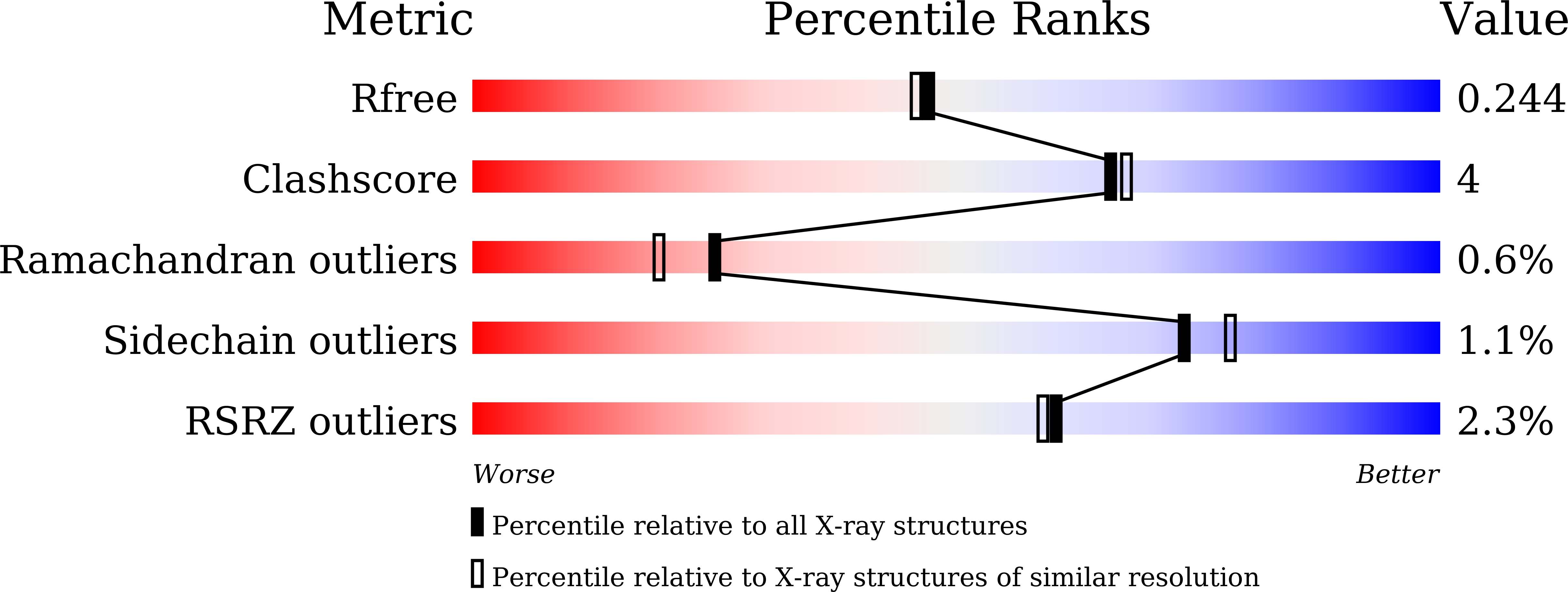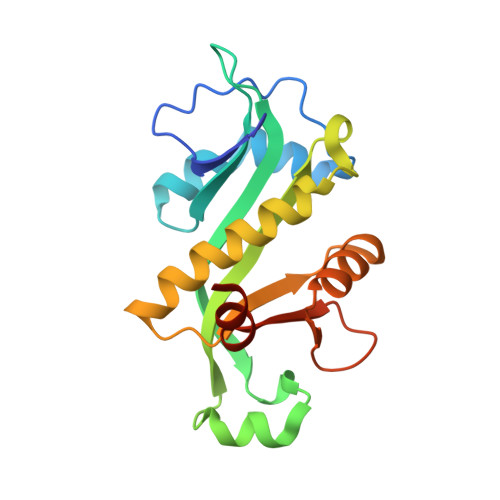Identification and characterization of acetyltransferase-type toxin-antitoxin locus in Klebsiella pneumoniae
Qian, H., Yao, Q., Tai, C., Deng, Z., Gan, J., Ou, H.Y.(2018) Mol Microbiol 108: 336-349
- PubMed: 29461656
- DOI: https://doi.org/10.1111/mmi.13934
- Primary Citation of Related Structures:
5XUN - PubMed Abstract:
A type II toxin-antitoxin (TA) system, in which the toxin contains a Gcn5-related N-acetyltransferase (GNAT) domain, has been characterized recently. GNAT toxin acetylates aminoacyl-tRNA and blocks protein translation. It is abolished by the cognate antitoxin that contains the ribbon-helix-helix (RHH) domain. Here, we present an experimental demonstration of the interaction of the GNAT-RHH complex with TA promoter DNA. First, the GNAT-RHH TA locus kacAT was found in Klebsiella pneumoniae HS11286, a strain resistant to multiple antibiotics. Overexpression of KacT halted cell growth and resulted in persister cell formation. The crystal structure also indicated that KacT is a typical acetyltransferase toxin. Co-expression of KacA neutralized KacT toxicity. Expression of the bicistronic kacAT locus was up-regulated during antibiotic stress. Finally, KacT and KacA formed a heterohexamer that interacted with promoter DNA, resulting in negative autoregulation of kacAT transcription. The N-terminus region of KacA accounted for specific binding to the palindromic sequence on the operator DNA, whereas its C-terminus region was essential for the inactivation of the GNAT toxin. These results provide an important insight into the regulation of the GNAT-RHH family TA system.
Organizational Affiliation:
State Key Laboratory of Microbial Metabolism, Joint International Laboratory on Metabolic & Developmental Sciences, School of Life Sciences & Biotechnology, Shanghai Jiao Tong University, Shanghai, China.
















